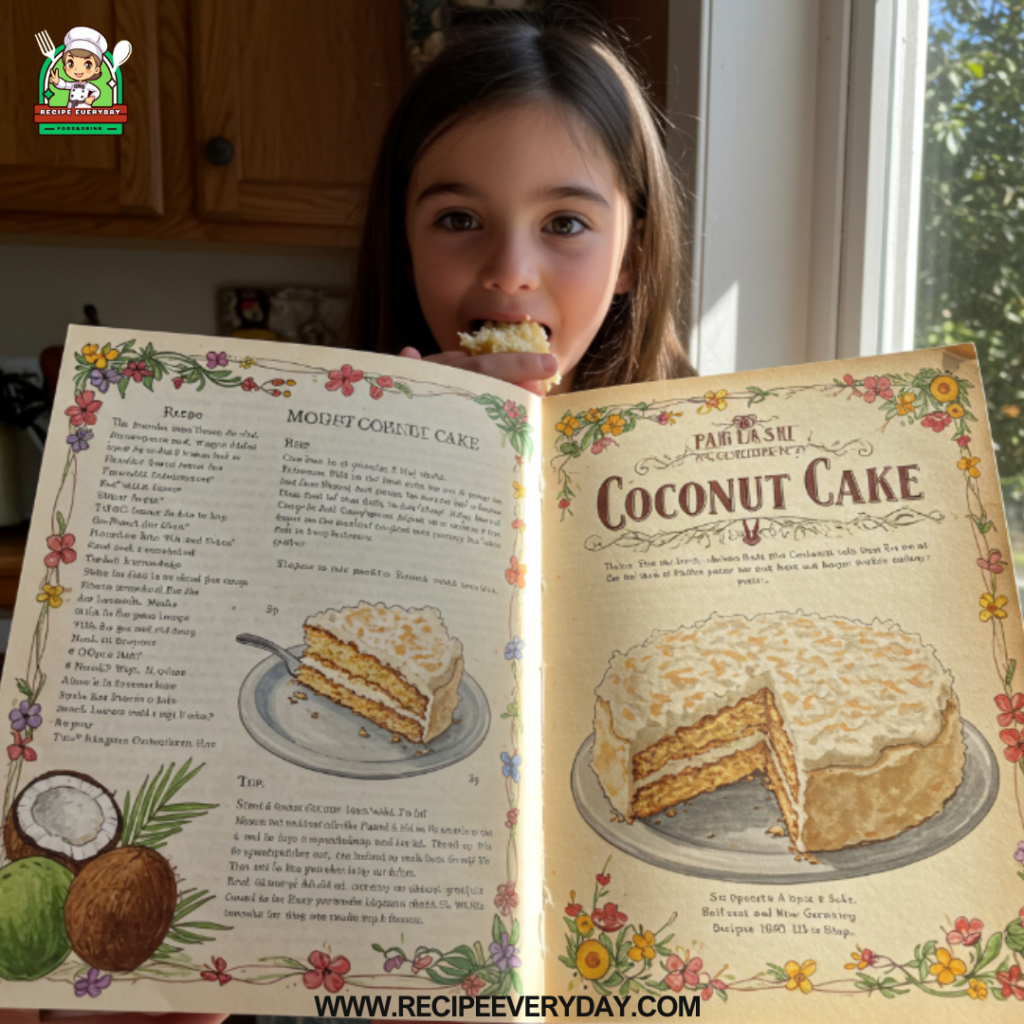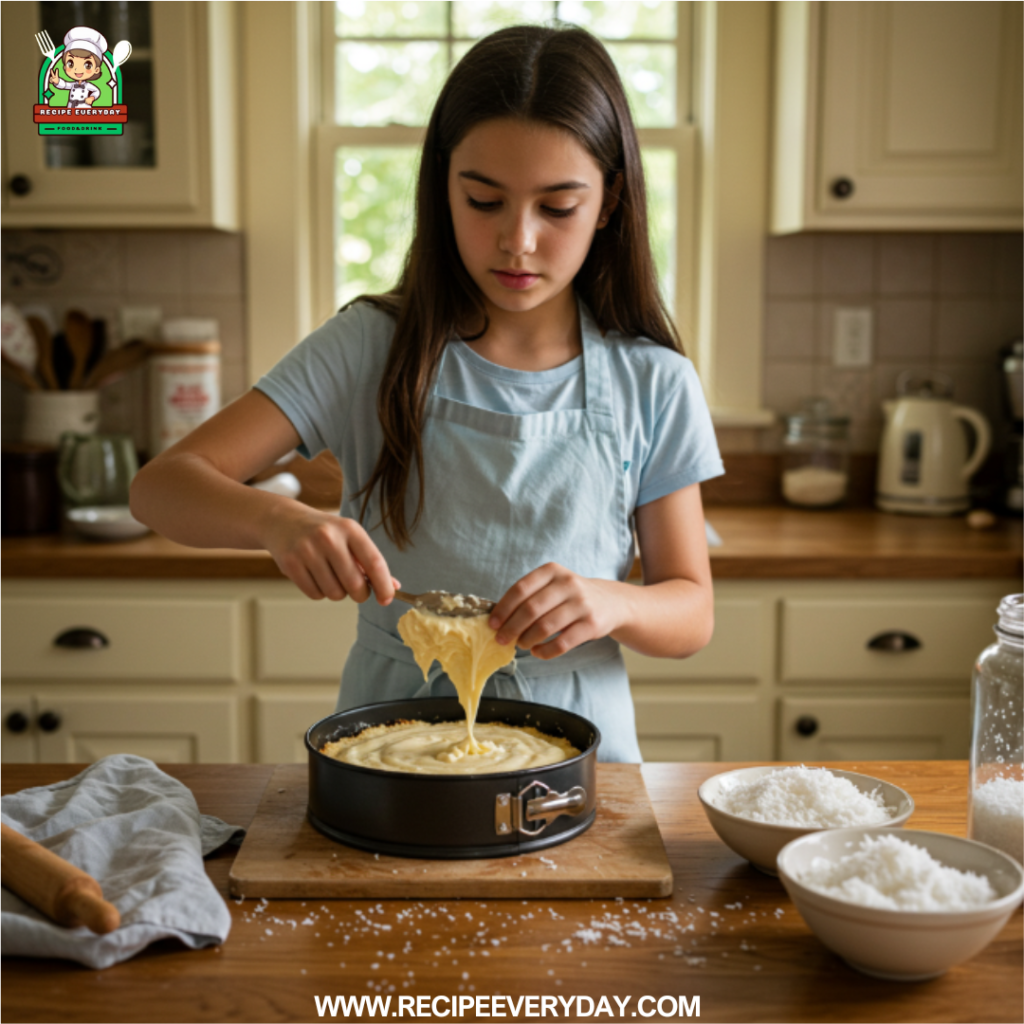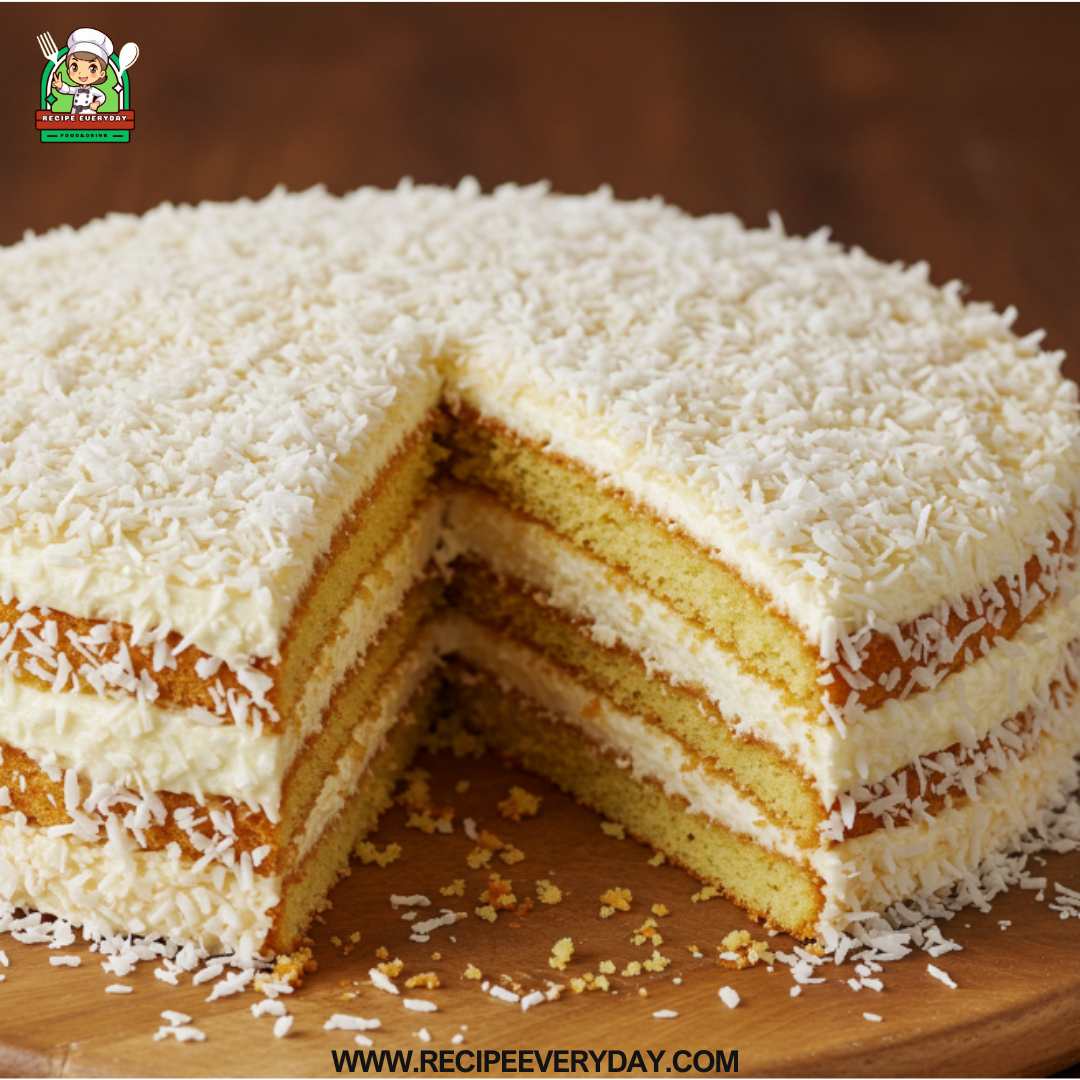The Timeless Charm of Classic Coconut Cake: Your Guide to Baking Perfection
Is there anything quite as evocative of warmth, celebration, and pure deliciousness as a slice of Classic Coconut Cake? For many, especially women aged 45-65 in the USA, UK, and Canada, this iconic dessert conjures up cherished memories of family gatherings, holiday feasts, and the comforting aroma of a home-baked treat. Whether you’re a novice baker just starting your culinary journey, a passionate cooking enthusiast always on the lookout for the perfect recipe, a dedicated home cook wanting to impress, or even someone who enjoys the satisfaction of meal prepping (yes, cake can be prepped!), this comprehensive guide will lead you to baking the most exquisite Classic Coconut Cake you’ve ever tasted.
Our goal is to not only provide you with a foolproof Classic Coconut Cake recipe but also to delve into the nuances that elevate this dessert from simple to sublime. We aim to rank highly on Google for the keyword “[Classic Coconut Cake]” and related long-tail searches like “[how to make the best Classic Coconut Cake]” and “[Classic Coconut Cake recipe for beginners]” by offering valuable, accurate, and engaging content that addresses your needs and interests. So, grab your apron, preheat your oven, and let’s embark on a delightful baking adventure!
The Enduring Appeal of Classic Coconut Cake: A Taste of Nostalgia
The Classic Coconut Cake holds a special place in the hearts of many. Its moist, tender crumb, the sweet and distinctive flavor of coconut, and the often generous frosting of shredded coconut create a symphony of textures and tastes that is simply irresistible. For our target audience, this cake often represents more than just a dessert; it’s a connection to tradition, a symbol of home, and a source of comfort.
But beyond the nostalgia, the Classic Coconut Cake is also a versatile and impressive bake. It’s perfect for birthdays, holidays (especially Easter!), potlucks, or simply as a special treat to brighten any day. While it might seem intimidating to some, our recipe is designed to be accessible to bakers of all skill levels, ensuring that you can confidently create a truly exceptional Classic Coconut Cake.
What Makes This the Best Classic Coconut Cake Recipe?
You might be wondering what sets this recipe apart and makes it the best Classic Coconut Cake recipe. We’ve focused on several key elements to ensure success and maximum flavor:
- Moisture is Key: A dry cake is a baker’s biggest disappointment. Our recipe incorporates ingredients that contribute to a wonderfully moist crumb that stays delicious for days.
- Balanced Coconut Flavor: We utilize coconut in multiple forms – coconut milk in the batter, coconut extract for an extra boost, and of course, shredded coconut in the frosting – to achieve a perfectly balanced and authentic coconut flavor.
- Easy-to-Follow Instructions: We’ve broken down each step into clear, concise instructions, making it easy for even beginner bakers to follow along and achieve fantastic results.
- Tips and Tricks for Success: We’ll share valuable baking tips and tricks that will help you avoid common pitfalls and ensure your Classic Coconut Cake turns out perfectly every time.
- Adaptability: While this is a Classic Coconut Cake recipe, we’ll also offer suggestions for variations and substitutions to suit dietary needs and personal preferences.
Gathering Your Ingredients: The Foundation of a Great Classic Coconut Cake

Before you begin, it’s essential to have all your ingredients measured and ready. Here’s what you’ll need to make our delicious Classic Coconut Cake:
For the Cake:
- 2 ½ cups all-purpose flour
- 1 teaspoon baking powder
- ½ teaspoon baking soda
- ½ teaspoon salt
- 1 cup (2 sticks) unsalted butter, softened1
- 1 ¾ cups granulated sugar
- 4 large eggs
- 1 teaspoon vanilla extract2
- ½ teaspoon coconut extract (optional, but recommended for enhanced flavor)
- 1 cup full-fat coconut milk (not the canned cream of coconut)
For the Frosting:
- 1 cup (2 sticks) unsalted butter, softened
- 4 cups powdered sugar, sifted
- ½ cup full-fat coconut milk
- 1 teaspoon vanilla extract
- ½ teaspoon coconut extract (optional)
- 7 ounces sweetened shredded coconut (about 2 ½ cups)
Optional for Soaking the Cake Layers (adds extra moisture):
- ½ cup unsweetened coconut milk
- 1-2 tablespoons granulated sugar (optional, for a slightly sweeter soak)
Step-by-Step Guide: How to Make the Best Classic Coconut Cake
Now, let’s get baking! Follow these detailed instructions to create your own stunning Classic Coconut Cake:
1. Preheat Your Oven and Prepare Your Pans:
- Preheat your oven to 350°F (175°C).
- Grease and flour two 9-inch round cake pans. You can also line the bottoms with parchment paper3 circles for extra insurance against sticking.
2. Whisk the Dry Ingredients:
- In a medium bowl, whisk together the flour, baking powder, baking soda, and salt. Set aside.
3. Cream Butter and Sugar:
- In a large4 mixing bowl, using an electric mixer, cream the softened butter and granulated sugar together until light and fluffy.5 This should take about 3-5 minutes. Scraping down the sides of the bowl occasionally ensures everything is evenly mixed.
4. Beat in the Eggs:
- Beat in the eggs one at a time, making sure each egg is fully incorporated before adding the next. Beat well after each addition.
5. Add Extracts:
- Stir in the vanilla extract and coconut extract (if using).
6. Alternate Wet and Dry Ingredients:
- Gradually add the dry ingredients to the wet ingredients, alternating with the coconut6 milk. Begin and end with the dry ingredients. Add the dry ingredients in three additions and the coconut milk in two additions, mixing on low speed until just combined. Be careful not to overmix, as this can lead to a tough cake.
7. Divide and Bake:
- Divide the batter evenly between the prepared cake pans.
- Bake for 30-35 minutes, or until a wooden skewer inserted into the center comes out clean. The tops of the cakes should be lightly golden.
8. Cool the Cakes:
- Let the cakes cool in the pans for 10-15 minutes before inverting them onto a wire rack to cool completely. Make sure the cakes are completely cool before frosting.
9. Prepare the Coconut Soak (Optional):
- If using, whisk together the unsweetened coconut milk and sugar (if using) in a small bowl until the sugar is dissolved.
10. Make the Coconut Frosting:
- In a large mixing bowl, cream the softened butter until light and fluffy.
- Gradually add the sifted powdered sugar, one cup at a time, beating on low speed until incorporated. Increase the speed to medium and beat until the frosting is smooth and creamy.
- Stir in the coconut milk, vanilla extract, and coconut extract (if using). Beat until light and fluffy.
- Gently fold in about 1 ½ cups of the sweetened shredded coconut. You’ll use the remaining coconut for decorating the outside of the cake.
11. Assemble and Frost the Cake:
- Once the cakes are completely cool, place one layer on a serving plate or cake stand.
- If using the coconut soak, gently brush the top of the first cake layer with half of the coconut milk mixture.
- Spread an even layer of coconut frosting over the first cake layer.
- Carefully place the second cake layer on top.
- Brush the top of the second cake layer with the remaining coconut milk mixture (if using).
- Frost the top and sides of the cake with the remaining coconut frosting.
- Press the remaining sweetened shredded coconut onto the top and sides of the frosted cake.
12. Chill and Serve:
- Refrigerate the Classic Coconut Cake for at least 30 minutes to allow the frosting to set. This will make it easier to slice.
- Serve and enjoy your beautifully baked Classic Coconut Cake!

Tips and Tricks for Baking the Perfect Classic Coconut Cake
To ensure your Classic Coconut Cake is a resounding success, consider these helpful tips:
- Use Room Temperature Ingredients: Softened butter and room temperature eggs emulsify better, resulting in a smoother batter and a more tender cake.
- Don’t Overmix the Batter: Overmixing develops the gluten in the flour, which can make the cake tough. Mix until just combined.
- Measure Flour Accurately: Spoon the flour into your measuring cup and level it off with a straight edge. Avoid scooping directly from the bag, as this can pack the flour and result in too much flour in your batter.
- Test for Doneness: Use a wooden skewer inserted into the center of the cake to check for doneness. If it comes out clean, the cake is ready.
- Cool Cakes Completely Before Frosting: Frosting a warm cake will cause it to melt and slide off. Be patient and let the cakes cool fully.
- Toast Your Coconut (Optional): For a nuttier flavor and added texture, you can lightly toast some of the shredded coconut in a dry skillet over medium heat until golden brown, stirring frequently. Let it cool completely before using it for decoration.
- Make Ahead: The cake layers can be baked a day in advance, wrapped tightly in plastic wrap, and stored at room temperature. The frosting can also be made a day ahead and stored in the refrigerator. Let it come to room temperature and re-whip briefly before using.
Variations and Adaptations of Classic Coconut Cake
While our recipe focuses on the traditional Classic Coconut Cake, here are a few ideas for variations and adaptations:
- Coconut Cream Cheese Frosting: For a tangier frosting, substitute some of the butter in the frosting recipe with softened cream cheese.
- Lemon Coconut Cake: Add lemon zest and a tablespoon of lemon juice to the cake batter and frosting for a bright, citrusy twist.
- Vegan Coconut Cake: Substitute the butter with a vegan butter alternative, the eggs with flax eggs or a commercial egg replacer, and the coconut milk with full-fat canned coconut milk.
- Mini Coconut Cakes or Cupcakes: The batter can be baked in muffin tins to create individual mini coconut cakes or cupcakes. Adjust the baking time accordingly.
- Coconut Layer Cake with Filling: Add a layer of coconut pastry cream or a tropical fruit curd (like pineapple or mango) between the cake layers for an extra layer of flavor and texture.
Answering Your Questions About Classic Coconut Cake
Here are some common questions people have about making Classic Coconut Cake:
- Can I use sweetened condensed milk in the cake? While some recipes use sweetened condensed milk, our recipe relies on coconut milk for moisture and flavor. Using sweetened condensed milk will alter the sweetness and texture.
- What’s the difference between coconut milk and cream of coconut? Coconut milk is a thinner liquid extracted from grated coconut flesh, while cream of coconut is a thick, sweetened product often used in cocktails. Our recipe calls for unsweetened, full-fat coconut milk.
- Why did my cake turn out dry? Overbaking is a common cause of dry cakes. Ensure you’re not baking the cake for too long and that your oven temperature is accurate. Also, using too much flour can lead to a dry cake, so accurate measuring is important.
- Can I make this cake gluten-free? Yes, you can adapt this recipe to be gluten-free by using a good quality gluten-free all-purpose flour blend. You may need to experiment slightly with the liquid ratio.
- How should I store leftover Classic Coconut Cake? Leftover cake should be stored in an airtight container in the refrigerator for up to 3-4 days.
Food Facts Label: A Look at the Indulgent Delight
(Please note: This is an estimate and will vary based on specific ingredients and serving size.)
Serving Size: 1 slice (approximately 1/12 of the cake)
| Nutrient | Approximate Amount |
| Calories | 400-550 kcal |
| Total Fat | 20-30 g |
| Saturated Fat | 15-20 g |
| Cholesterol | 75-100 mg |
| Sodium | 150-250 mg |
| Total Carbohydrate | 50-70 g |
| Dietary Fiber | 1-2 g |
| Total Sugars | 35-50 g |
| Protein | 3-5 g |
The Classic Coconut Cake, while undeniably delicious, is a rich dessert best enjoyed in moderation as part of a balanced diet. The coconut provides some fiber and healthy fats, but the overall profile is higher in calories, fat, and sugar due to the butter, sugar, and frosting.
Conclusion: The Joy of Baking Your Own Classic Coconut Cake
There you have it – your comprehensive guide to creating a truly exceptional Classic Coconut Cake. We’ve covered everything from the essential ingredients and step-by-step instructions to helpful tips, variations, and answers to your burning questions. We hope this article has inspired you to embrace the joy of baking and create a Classic Coconut Cake that will delight your family and friends.
Whether you’re baking for a special occasion or simply want to treat yourself to a slice of homemade goodness, this Classic Coconut Cake recipe is sure to become a cherished favorite. So, preheat that oven, gather your ingredients, and experience the satisfaction of creating this timeless and delicious dessert.
What are your favorite memories associated with Classic Coconut Cake? Do you have any family secrets or special touches you add to your recipe? Share your experiences and tips in the comments below – we’d love to hear from you!
The Ultimate Guide to the Best Overnight Oats Recipe: Your Delicious & Healthy Breakfast Solution
The Ultimate Guide to Perfect Homemade Chocolate Chip Cookies

